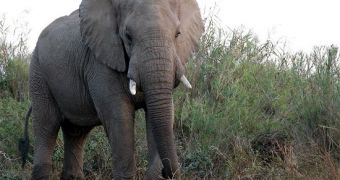Researchers led by Fiona Maisels with the Wildlife Conservation Society have recently completed a census of the world's remaining forest elephant population, and have found that, when compared to figures recorded about 12 years ago, the world is currently home to 65% fewer such creatures.
Besides, 95% of the forests in the Democratic Republic of Congo appear to no longer be inhabited by any elephants belonging to this species.
Speaking at a meeting that took place in London this past February 12, Fional Maisels explained that, between the years 2002 and 2013, about 2,000 elephants were killed and butchered by poachers.
These hunters slaughtered the animals in order to get their hands on their tusks, and later sell the ivory obtained in this manner on the illegal market.
To put things into perspective, Fional Maisels explained the high rate of poaching documented within said time frame as follows:
“At least a couple of hundred thousand forest elephants were lost between 2002-2013 to the tune of at least sixty a day, or one every twenty minutes, day and night.”
“By the time you eat breakfast, another elephant has been slaughtered to produce trinkets for the ivory market,” the researcher added, as cited by Mongabay.
One would assume that, because they live in the forest, these elephants would be less vulnerable to poachers, simply because hunters would have a more difficult time tracking them down.
However, the fact that they do not live out in the open means that forest elephants are fairly tricky to monitor, which is why conservationists often have trouble figuring out what is happening to a given population.
What's more, poachers have an easier time killing them without having anyone notice, and are therefore less likely to be arrested for their deeds.
Despite the fact that scientists have proven them to be a distinct species, forest elephants are yet to be recognized as such by the International Union for the Conservation of Nature.
Thus, they are grouped together with savanna elephants, and, instead of being considered endangered, are labeled as being merely vulnerable.

 14 DAY TRIAL //
14 DAY TRIAL //